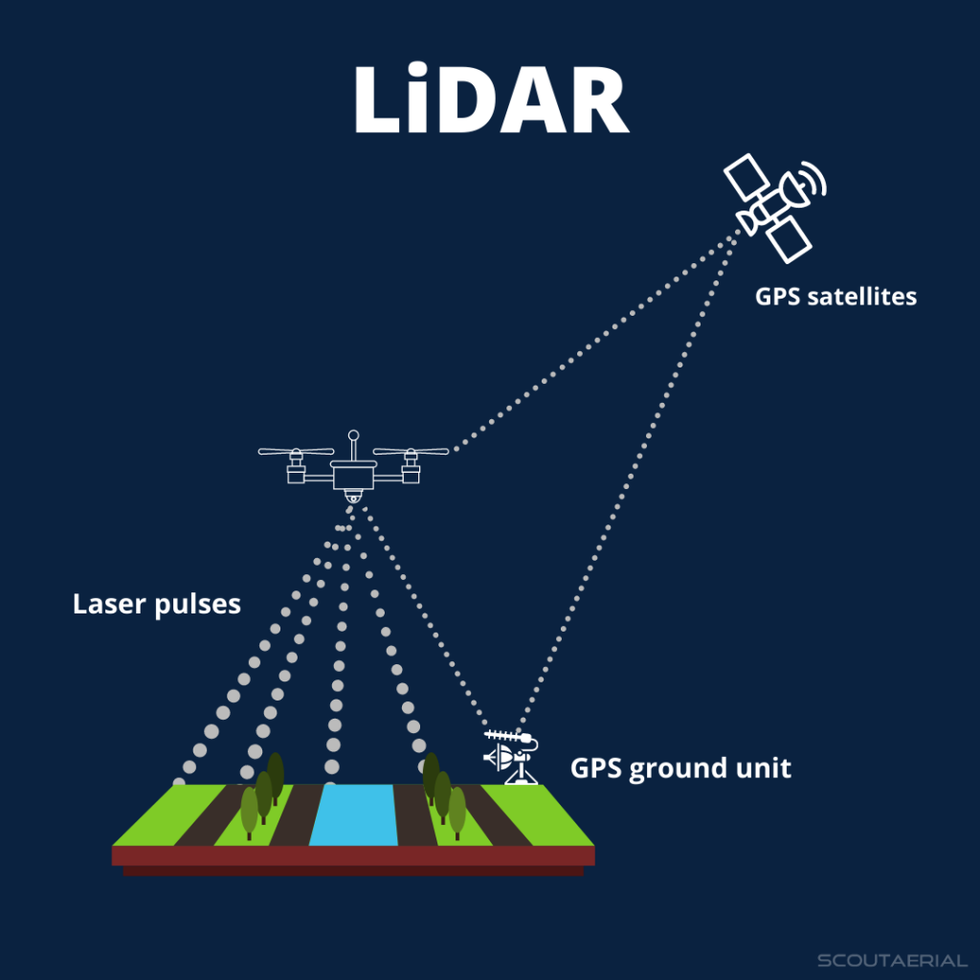About LiDAR:
- Light Detection and Ranging (LiDAR) is a remote sensing technology that uses light in the form of a pulsed laser to measure ranges (or variable distances) of a sensor, usually mounted aboard an aircraft, to Earth’s surface.
- LiDAR data can be used to create high-resolution 3-D models of ground elevation with a vertical accuracy of up to 10 cm.
- Working
- LiDAR instrumentation comprises a laser, a scanner, and a GPS receiver.
- The rapidly firing laser travels to the ground where it hits vegetation, buildings, and various topographic features. This light is reflected or scattered, and recorded by the LiDAR sensor.
- The system calculates the light pulses’ two-way travel time to arrive at the distance between the terrain and the sensor.
- It processes this information with Global Positioning System (GPS) and Inertial Measurement System (IMS) data, to create an elevation map of Earth.
- LiDAR data is initially collected as a “point cloud” of all individual points reflected from everything on the surface, including structures and vegetation.
- The specific of how much light energy was returned to the sensor allows further identification of different features, such as vegetation, buildings, etc. For example, tree canopies, however dense they may be, allow some light to pass through and hit the ground.
- Its data can be further refined to produce what scientists call a “bare earth” Digital Elevation Model, in which structures and vegetation are stripped away.
- Applications
- It is used to generate precise, three-dimensional information about the shape of the Earth and its surface characteristics.
- This is obviously very useful information for geographers, policymakers, conservationists, and engineers.
It has also shown potential as a tool of archaeological discovery.
